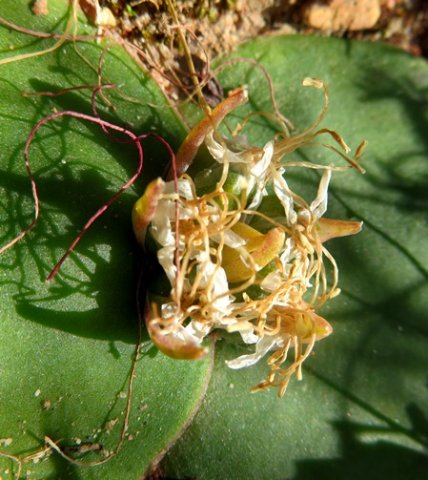Massonia

Author: Ivan Lätti
Photographer: Thabo Maphisa
Massonia is a genus of bulbous perennials in the Hyacinthaceae family, sometimes called hedgehog lilies.
There was a formal name change decision taken in 2016 by the APG (Angiosperm Phylogeny Group) IV, moving Hyacinthaceae entirely into Asparagaceae as the subfamily Scilloideae. This will probably cascade through the botanical literature in due course, meaning that Hyacinthaceae is officially no longer recognized as a separate family. Later South African books do not necessarily show this change yet, for reasons including that it is not legally binding and the people in the plants community are allowed to take their time in absorbing changes, bigger ones more slowly. And, of course, some recent decisions may be expected to be reversed or modified still, as all the evidence supporting them may not yet have fully percolated through the system.
Optional earlier classifications may thus be continued, preventing sudden changes from causing regional confusion among users. Allowing taxonomic conservatism to adapt, should be regarded as temporary, for in the end all recognized plant families should be monophyletic, meaning that they confirm descent from a most recent common ancestor and include all descendants. Formally given scientific plant names are continually brought up to date, in accordance with this principle. This website, mainly serving amateurs, usually follows the SANBI Red List Site in its timing of reflected changes.
Massonia bulbs range from nearly globose to ovoid or ellipsoid, some with flattened base and top, the roots deciduous and fleshy. The outer coverings of the bulbs are thin, brown tunics, the body scales inside fleshy. The plants often grow in the open in full sun, several of them only 3 cm to 5 cm tall.
The two broadly ovate to rounded leaves fold at the base and spread flat on the ground. They lie opposite each other, sheathing with transparent, membranous cataphyll below ground level. The blades are either smooth with sunken veins or rough, covered in hairs, pustules, warts or tiny, spine-like protuberances.
The inflorescence is shaped as a condensed corymb or a flat, head-like spike near the ground, nested between the leaves and varying in the number of its small flowers. There are large outer bracts and small, inner ones. The short-stalked flowers are white, pink or greenish, sometimes with orange filaments. The regular flower-shape has its tepals joined at the base in a narrow tube and bent twice, withering soon but persisting. The flowers are usually fragrant, sometimes strongly so.
The six stamens arising from the corolla tube have filaments joined at the base into a cup or disc, the anthers oblong to linear. The three-locular ovary is superior, globose to triangular, its style tapering.
The fruit is a triangular capsule, sometimes winged, noticed and papery when dry. The seeds are black and globular.
There are about ten species, all occurring in southern Africa and five of them in the fynbos region. The plant in picture is Massonia depressa past flowering in the Biedouw Valley in September (Pooley, et al, 2025; Leistner, (Ed.), 2000; Duncan, 2010; Manning, 2007; http://redlist.sanbi.org).

